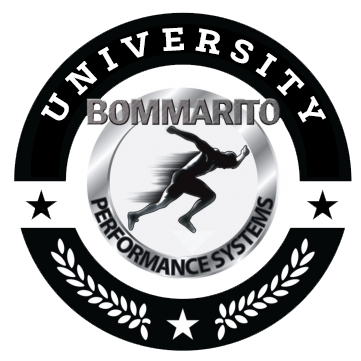The Variable Load Effect. Most of our Posterior Chain Exercises are done with a Variable Load component. Whether we are implementing a cable exercise, a Prone Row, a Landmine Row, a Jammer Row, a Seated Row, and/or a High Row, we have success with setups that account for band attachments. Occasionally we will add in chains (example a Prone Bar Row) – but Bands are typically our preference. This accommodating resistance factor is essential to complete Posterior Chain development.
Note in the first exercise, the Prone Row has a double band attachment on the lever. This will increase the load throughout the concentric part of the row (the lever gets heavier as the lever moves closer to the chest).
In the second exercise, the Standing Single Arm Cable Low Row, can be done with several variations. Which include, but are not limited to: SA Mid Row, SA High Row, DA Row, Half Kneeling position, Seated position, etc. Note that we installed a plate with attachments on the top of the weight stack; and subsequently Band hooks on the outside uprights that surround the weight stack. This allows for double Short Band attachments – which SIGNIFICANTLY increases the variable load. During the concentric portion of this row, the weight stack will move up the rods; that extreme band tension at the top. Thus, providing the overload as the hand moves towards the ribs. This is also great for trunk rotation. In this standing parallel stance – the isometric trunk rotation is emphasized throughout the row. With the double banded extreme variable load – this trunk rotation aspect is extreme (especially at the top of the concentric).
The final exercise is an Air Resisted Row. We use the Flexline or Keiser (Flexline preferred). This is a CONTSTANT load based on the pneumatic system. However, similar loading properties occur as with the Band accommodating resistance. Mainly, the client can accelerate through the end range of motion. Which cannot be done with typical Cable Rows (UNLESS implemented with band attachments) or Lever Rows (UNLESS implemented with band attachments).
Overall, this accommodating resistance is crucial for complete Posterior Chain Development. We use Speed Rows of all stances, positions, and angles. Which the variable load is absolutely necessary for safety, protecting the equipment, and achieving the INTENTION of accelerating through the end range of motion. However, we even implement them on max effort work, volume work, high tempo work, etc. The motor unit recruitment will be maximized if the load increases throughout the concentric. Hence, “more bang for your buck” feature.

